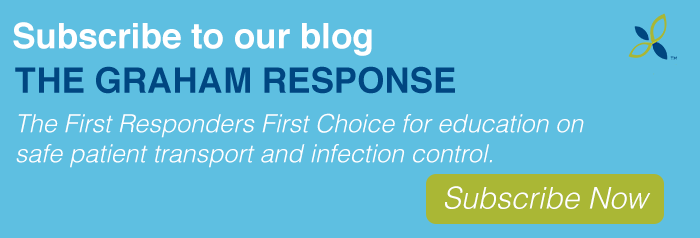 2020 has been a trying year for nearly every industry, but perhaps no one was impacted as directly as first responders. Every day, firefighters, EMTs, and other first responders were on the front line facing a virus that spread across the world. Unlike patient care in the controlled environment of a healthcare facility, EMS care presented unique challenges in the wake of a pandemic, including uncertain response environments, interventions with limited information, enclosed spaces during transport and the need for rapid decision-making.
2020 has been a trying year for nearly every industry, but perhaps no one was impacted as directly as first responders. Every day, firefighters, EMTs, and other first responders were on the front line facing a virus that spread across the world. Unlike patient care in the controlled environment of a healthcare facility, EMS care presented unique challenges in the wake of a pandemic, including uncertain response environments, interventions with limited information, enclosed spaces during transport and the need for rapid decision-making.
As EMS teams doubled down on safety precautions, this led to unfamiliar scenarios for individuals in the field. With additional guidelines and precautions in place, there were adjustments that first responders had to take in stride. As 2020 comes to an end, let’s recap this past year and provide resources to help get your team on the straight and narrow for 2021.
Understanding the pressures of the job.
In addition to caring for patients, first responders faced other challenges in 2020. According to a March poll from EMS1, 35% of respondents said their biggest COVID-19 EMS-related concern was a fear of running out of supplies, 24% said they were most afraid of being infected and 20% were most concerned about infecting others. These concerns were similar to those experienced by hospital and clinic workers as well.
PPE shortages
As cases surged in 2020, a lack of PPE supplies was an ongoing concern for healthcare workers. According to a New York Times article from July 2020, the shortage of protective gear began in major cities, but expanded to medical facilities across the country. To optimize the use of PPE, the CDC created a burn rate calculator to help healthcare workers track their average consumption rate of supplies. The CDC also published guidelines to recommend extended use and limited reuse of n95 respirators during the pandemic.
Risk of infection
Because first responders directly interact with other persons, it’s only normal to fear contracting and spreading the virus. To help mitigate risk, the Centers for Disease Control and Prevention (CDC) issued interim recommendations for EMS systems this year. According to an update issued in July 2020, these included:
- Screening all EMS personnel for signs and symptoms of COVID-19 at the start of each shift
- Assessing all patients for COVID-19 infection
- Implementing universal source control measures
- Encouraging physical distancing
- Implementing universal use of PPE
- Creating a process to address COVID-19 exposures among EMS personnel
Staffing issues
The combined pressures of PPE shortages, risk of infection and more led to understaffing in 2020. To help mitigate staffing shortages due to COVID-19, the CDC recommended numerous approaches for healthcare facilities, including a contingency capacity strategy and a crisis capacity strategy. The organization urged facilities to understand their staffing needs and be in communication with local healthcare coalitions and federal, state and local public health partners to identify when additional personnel were needed.
Creating a culture of awareness and encouragement.
As these scenarios illustrate, stress became an even larger part of first-responders’ jobs in 2020. However, by creating a culture of awareness and encouragement, it’s possible to empower your staff to deal with unexpected situations in the future. Understanding your staff—and being aware of their needs—is a step in the right direction. Below are several warning signs to observe amongst your staff:
- Negativity that gives rise to conflict
- Physical abnormalities
- Compassion fatigue
- Questionable behavior
Monitoring the behavior of your colleagues can only help create a culture of support. Additionally, focusing on the needs on your staff can help build a more resilient workforce as you head into the new year. As we have noted before, here are just a few ways you can support first responders in 2021:
- Pay attention to how changes in the job affect your colleagues
- Encourage EMS professionals to make the most of their downtime
- Highlight the stress-relieving benefits of exercise
- Advise staff to carve out some time for activity
- Prioritize nutrition, hydration and restful sleep every night
- Empowering first care responders in trying times.
Despite the turmoil of 2020, it’s possible to end the year on a note of positivity and focus on the future. Recognizing factors that may be overwhelming for EMS workers and fostering a culture of awareness and support can help first responders get through the pandemic. It can also help to remind your colleagues that people care by sharing stories of appreciation.
Graham Medical offers unwavering gratitude and support to all first responders—in 2021 and beyond. If you found this article helpful, please subscribe to our blog.

